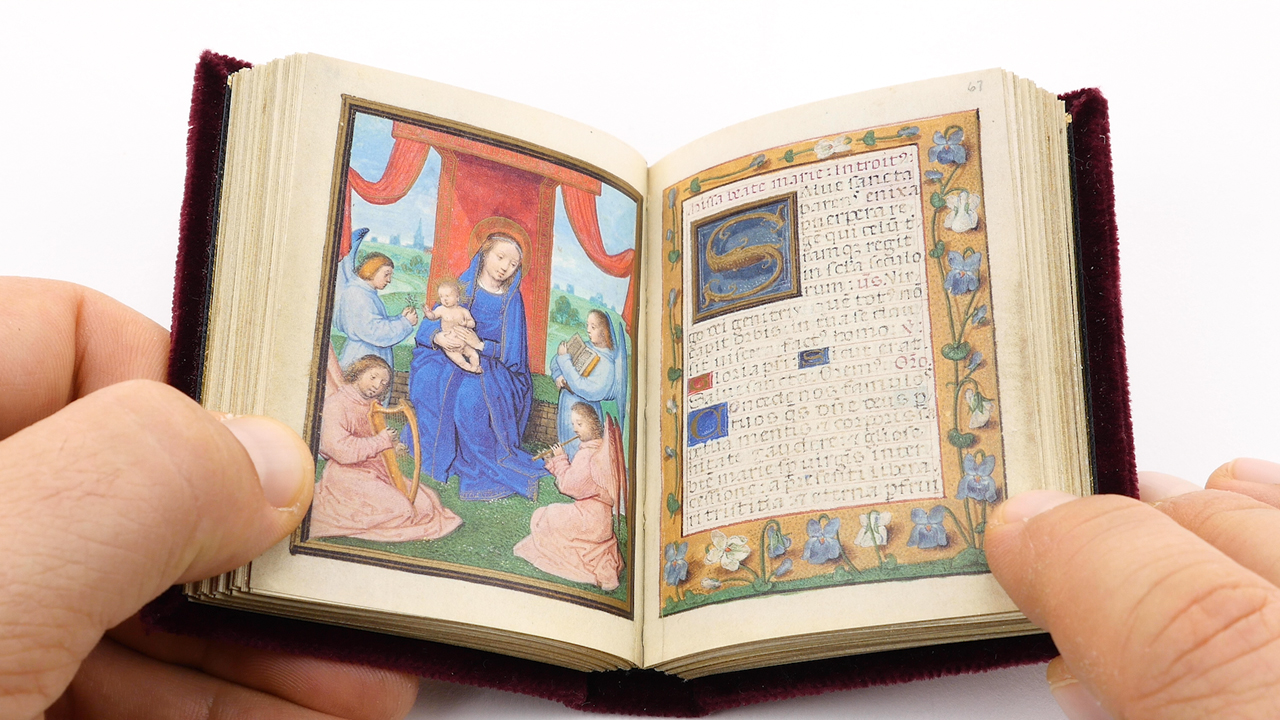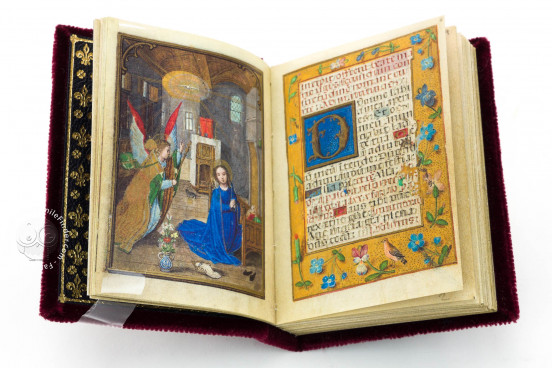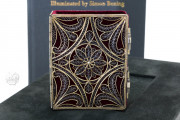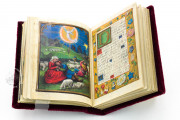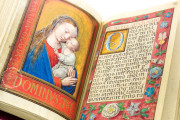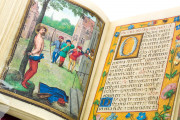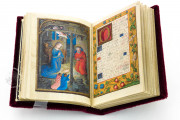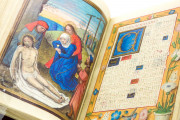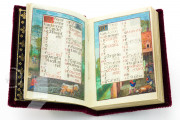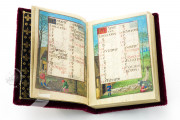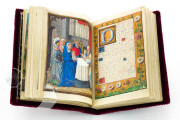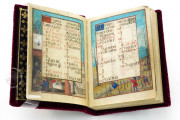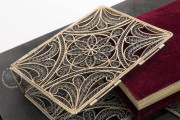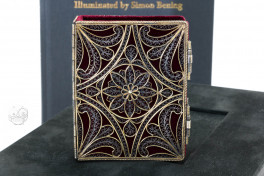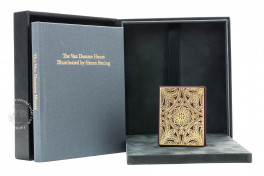In many ways both typical and exceptional, the Van Damme Hours is the lavish creation of two Flemish masters of manuscript production. Antonius van Damme, the scribe after whom the book was named and who signed the work in 1531, and Simon Bening, a prolific illuminator who collaborated with van Damme on many projects, made this manuscript in their workshops in Bruges for an unknown client who, based on the selection of saints and readings, was likely a wealthy patron and a close supporter of the Franciscan order.
This diminutive Book of Hours, use of Rome is the ultimate in Northern Renaissance manuscript production. Hand-lettered and illustrated on vellum, it is among the last books for private devotion to be made in this manner and would have been affordable only to the very richest. Its small size, rich pictorial detail, and exquisite craftsmanship make the Van Damme Hours a precious relic from the end of a millennium of sumptuous manuscript production in Europe.
A Masterpiece of Miniature Proportions
Measuring only 7.4 x 5.6 centimeters, about the size of a deck of cards, the Van Damme Hours is a masterpiece of miniature proportions. The stunning detail with which Simon Bening executed both the seasonal frames of the twelve calendar pages and the thirty-two full-page iconic images of the Life of the Virgin and individual saints is extraordinary.
Several saints are shown from the waist up in the foreground of the picture pane placing the figure in close proximity to the viewer. The floral frames surrounding the texts are exquisitely vibrant and varied giving a dimensional depth to the page.
The Merging of Northern and Italian Renaissance
The Van Damme Hours is the earliest example of Bening’s mature style in which he relied heavily on Italian models. His brushwork resulted in velvety and atmospheric landscapes and his masterful use of color created strong contrasts between the subjects and the backgrounds. The trompe l’oeil frames overlaying the miniatures of the saints creates the effect of manuscript-cum-altarpiece.
Bening worked throughout Europe and by the last decades of his life he had developed a style that merged the grand realism of Italian figural painting with the detailed landscapes and intimate vignettes from the Flemish manuscript and altarpiece traditions.
The Last Decades of Manuscript Illumination
With the invention of the printing press in the mid-fifteenth century, books for private devotion became more widely accessible. Even with hand-colored illustrations, ink printed on paper was far less expensive than an illuminated manuscript. By the early decades of the sixteenth century, only Europe’s elite could afford the expense of a hand-painted and handwritten book such as the Van Damme Hours. Ownership of this book is unknown before John Strange in the eighteenth century. Over the next decades, it passed through various hands before being purchased by J. Pierpont Morgan in 1911.
Binding description
The book was rebound in the eighteenth century while in the ownership of John Strange in red velvet with black fleur-de-lisée doublures with a cross and initials: J.H.S.
We have 2 facsimiles of the manuscript "Van Damme Hours":
- Das Van-Damme Stundenbuch (Deluxe Edition) facsimile edition published by Faksimile Verlag, 2013
- Das Van-Damme Stundenbuch (Standard Edition) facsimile edition published by Faksimile Verlag, 2013

